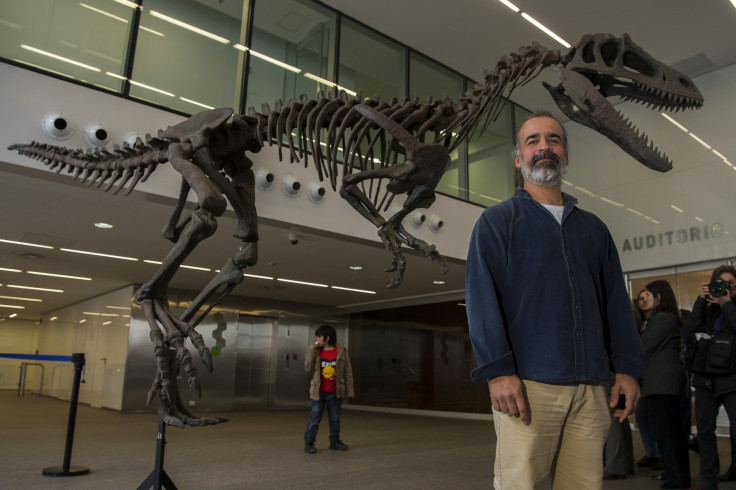New Dinosaur Lineage, Gualicho Shinyae, With Tiny Arms Discovered In Argentina

Fossils found in the Patagonia region of Argentina belonged to a previously unknown dinosaur from the same group that includes the Tyrannosaurus Rex. Like its famous cousin, despite its hulking body size — between 20 feet to 26 feet — the carnivore had tiny arms that measured only about 2 feet.
The theropod, named Gualicho shinyae — Gualicho is an evil spirit that brings ill-luck, according to the beliefs of Patagonia’s indigenous people, and Akiko Shinya discovered the fossils in 2007— lived in the Cretaceous Period 90 million years ago. It relied on its formidable teeth, instead of its feeble forelimbs, for hunting. It stood upright on two slender legs that likely gave it considerable speed.
Gualicho evolved separately from other known theropods, many of which grew massive bodies and skulls while their forelimbs shrank and the number of fingers reduced during their millions of years of evolution. The earliest dinosaurs had five fingers while many theropods, including T. rex and Gualicho, had only two.
“Something totally new has been discovered, a new lineage that we didn’t know of before,” Argentine paleontologist Sebastian Apesteguia, part of the research team analyzing the fossils, said at a news conference in Buenos Aires. “Why did this specie have a reduction regarding the size of their arms, having only two fingers similar to a Tyrannosaurus? That’s something that we still don’t know.”
There are many characteristics of Gualicho that set it apart from other known dinosaurs, and that makes it a challenge for scientists to fit it in their understanding of the biggest creatures ever to have roamed the Earth.
The team that found the fossil faced its own challenges. The land on which the fossils were found belonged to a sheep rancher who agreed to let scientists to dig it up — after eight years of persuasion. And once discovered, it took several years, an election and a new political regime before scientists were allowed to study the fossil.
Conclusions of the analysis were published Wednesday in the PLOS ONE journal.
© Copyright IBTimes 2024. All rights reserved.





















